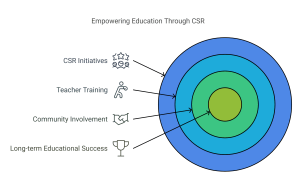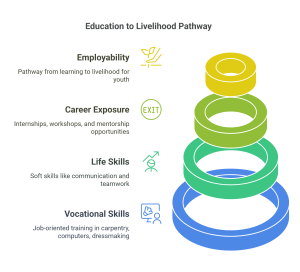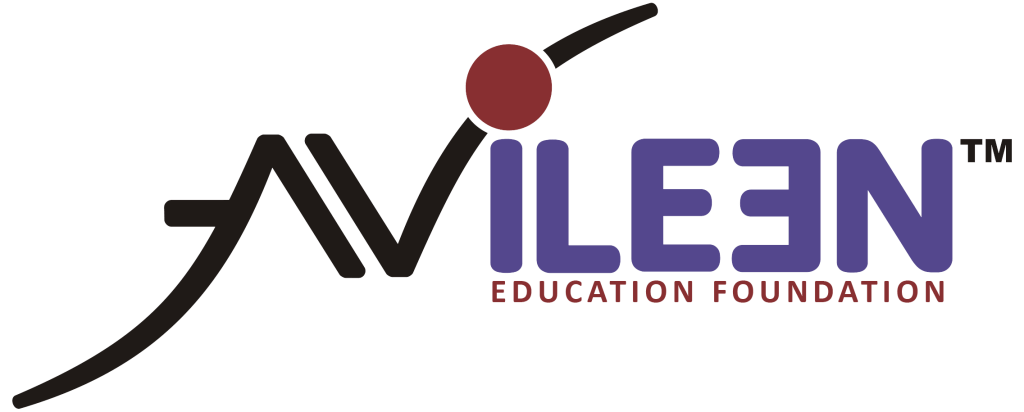Education has long been recognized as one of the most important pillars of social and economic growth. In India, differences in education between cities and villages, boys and girls, and rich and poor have made Corporate Social Responsibility (CSR) an important force for change. CSR activities have moved from compliance and sponsorship to being the drivers of scalable, sustainable, and impactful transformation in the Indian education sector.
Education Has Emerged as a Major Area of Focus For CSR in India.
The Companies Act, 2013, marked a major turning point in CSR for India. Now that companies have to give 2% of their average profits to social causes, education naturally became a top priority. This isn’t just because education is important for the country’s growth, but also because there are still many challenges in India’s education system, like poor infrastructure, low learning levels, high dropout rates, and a growing digital divide.
Supporting education helps CSR programs create lasting positive change in society, whether it’s by improving early learning, teaching digital skills, or helping youth develop job-ready skills.
From Infrastructure To Impact: The Changing Csr Strategy
Early CSR in education is supposed to involve building schools, donating materials, or funding scholarships. Although all these remain significant, the narrative has transformed. CSR programs nowadays focus on learning outcomes, equity, and sustainability.
Modern interventions are increasingly aimed at
- Strengthening the foundations in reading and numeracy
- Bridging the gaps in learning via remedial programs
- Incorporating digital tools and interactive material into the classroom
- Supporting self-directed, personalized learning environments
This transformation indicates a more profound insight: quality and relevance, not just access, are as critical.

Empowering Educators And Local Communities
One of the most significant CSR-driven education program changes is the focus on enabling teachers and communities. Lack of qualified teachers and the absence of community participation weaken the performance and attendance of students in most areas.
Teacher training programs sponsored by CSR now emphasize
- Blended education and digital learning
- Strategies for classroom innovation and student engagement
- Peer learning and knowledge-sharing networks
In parallel, community-led models are gaining ground where parents, school management committees, and local volunteers play active roles in tracking attendance, promoting girls’ education, and running after-school support programs. This kind of local involvement helps build trust, a sense of ownership, and long-term success
Addressing The Digital Divide In Education
The COVID-19 crisis exposed the harsh digital divide in Indian education. Millions of students could not access the digital classroom because they did not have the devices, connectivity, or digital competence. CSR programs responded rapidly by pivoting to promote digital inclusion, now a foundation in post-pandemic education recovery.
Key initiatives include:
- Tablet, smartphone, and internet dongle distribution
- The development of community digital learning centers
- Curation of digital content in regional languages to enhance accessibility
- Educating students and teachers on the efficient use of digital platforms
These interventions are supporting a transition from school-based learning to Anytime, Anywhere Learning enabling students to learn at their own speed, anywhere in the world.
Inclusive Education: Reaching The Unreached
CSR initiatives also target equity and inclusion; providing education to people who have been traditionally marginalized. Such target groups include:
- Girls from rural and tribal communities
- Children with disabilities
- Migrant laborers’ children
- Street children and dropouts
By targeting particular barriers, be it concerns regarding safety, stigma, lack of resources, or lack of school facilities; CSR-funded programs are contributing to the mainstreaming of these children into the education system. Such measures entail:
- Safe transportation and clean toilet facilities for everyone.
- Special education and assistive technologies for children with special needs
- Bridge courses to re-enter formal education for school dropouts

Linking Education To Livelihood: Vocational And Life Skills Training
Education in the modern world is not just all about academic achievement; it also needs to equip students to take on life and work. CSR-funded skilling programs have begun to incorporate vocational training and life skills into school-level education, particularly in rural and semi-urban areas.
They focus on:
- Carpentry, computer skills, and dressmaking are among the job-oriented skills
- Soft skills such as communication, teamwork, and financial education
- Exposure to career tracks through internships, workshops, and mentorship
By connecting education to employability, such programs provide a pathway from learning to livelihood, especially for youth in economically weaker sections.
Measuring The Impact And Sustaining It
One of the issues CSR programs continue to struggle with is measuring long-term impact. More programs remain in pilot phases or run in limited geographies. Yet, increasingly more programs now apply evidence-based approaches, using data to quantify:
- Rates of attendance and retention
- Better reading and math abilities
- Transition into higher education or employment
Further, the emphasis begins to be placed increasingly on developing sustainable ecosystems. This encompasses:
- Empowering local teachers and workers to conduct the programs on their own
- Fostering public-private partnerships to achieve scale
- Linking CSR efforts to government education missions such as Samagra Shiksha
Technology, Innovation, And Future Potential
Corporate social responsibility in education is not limited to the conventional models anymore. With the quick development of technologies, vast opportunities exist to utilize
- AI-driven personalized learning systems
- Gamified applications for foundational knowledge
- Virtual labs and simulations in science education
- Local e-learning sites for regional access
The objective is to make education more inclusive, engaging, and ready for the future, particularly for students in underprivileged communities.
Conclusion: CSR As A Catalyst For Educational Change
Corporate Social Responsibility (CSR) is no longer just about making one-time donations or small gestures. In India today, it’s become a powerful force driving real change in education—bringing new ideas, helping to include everyone, and making a bigger impact.
Even though there are still challenges, like tracking progress, expanding efforts, and working with government systems, things are moving in the right direction. With more dedication, teamwork, and public involvement, CSR has the potential to keep transforming the education system in India.
Every computer lab setup, every teacher trained, and every child back in school is a step closer to a more educated and fair India. There’s still a lot of work to be done, but the progress sparked by CSR in education is already making a huge difference.

